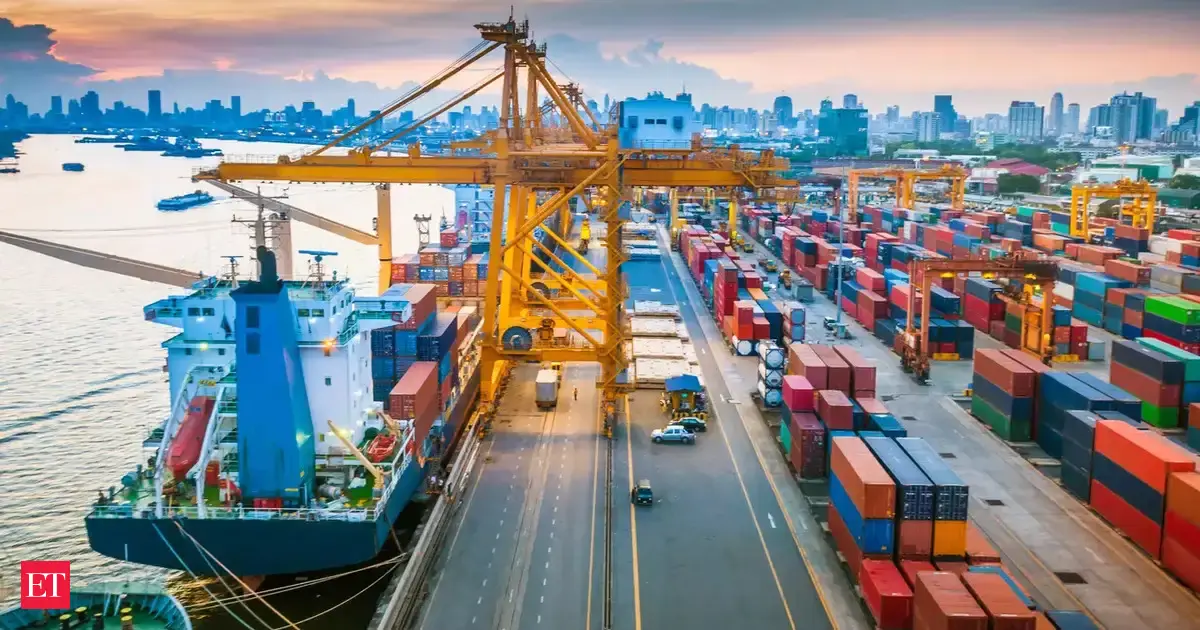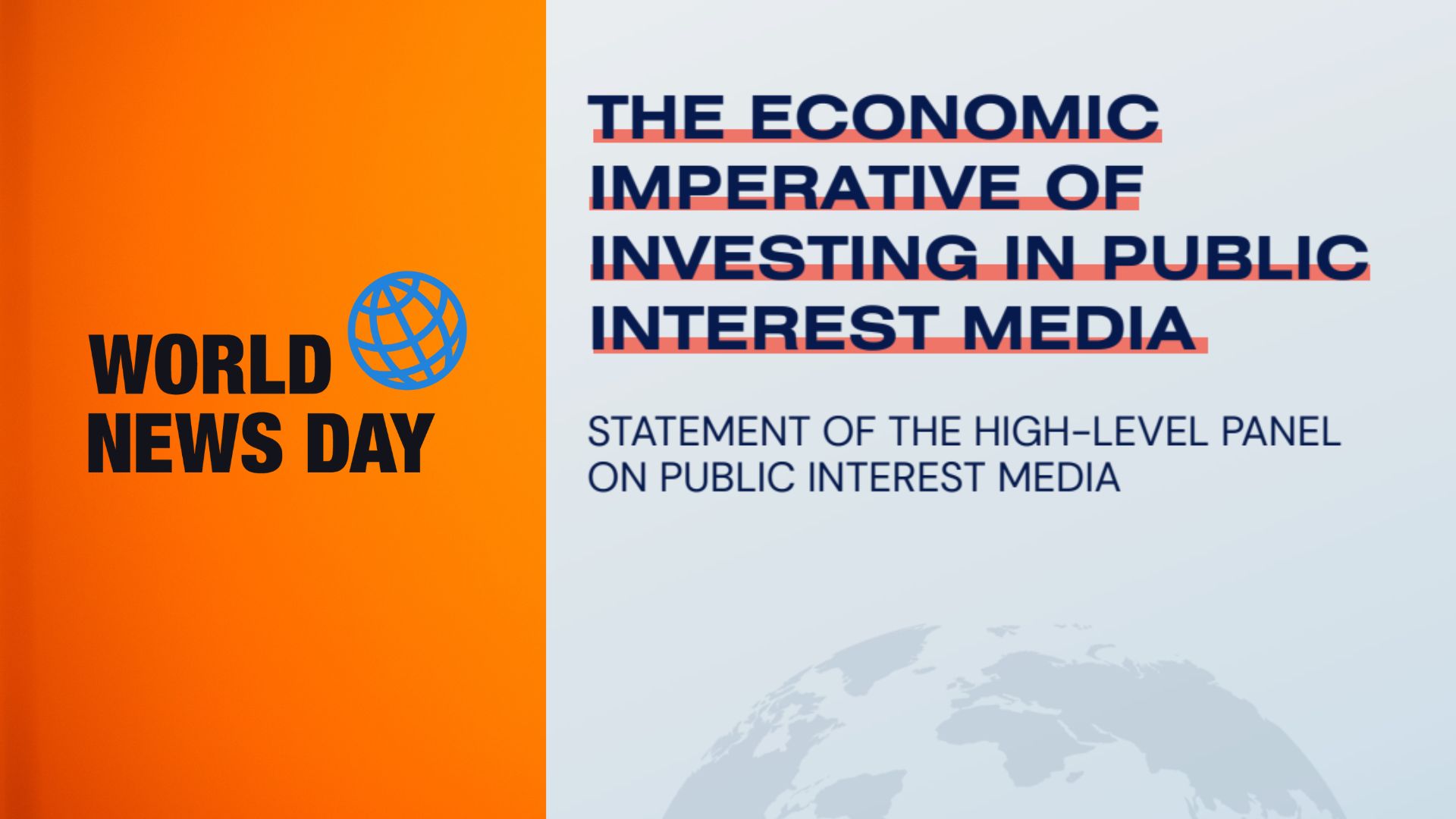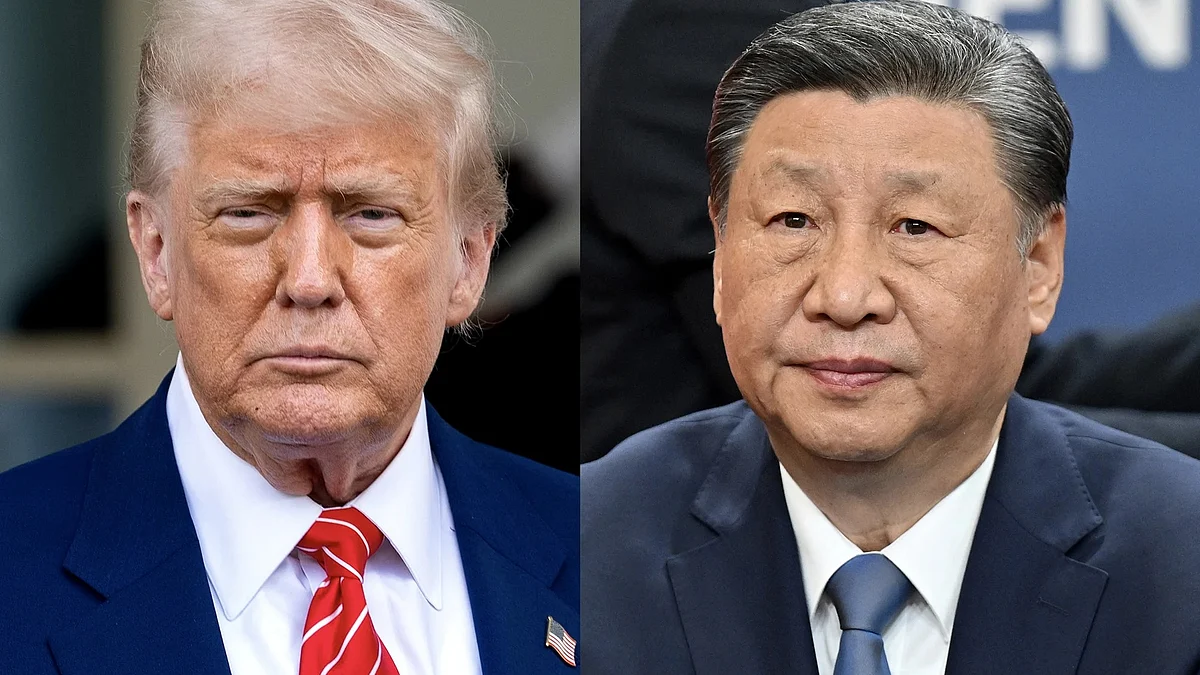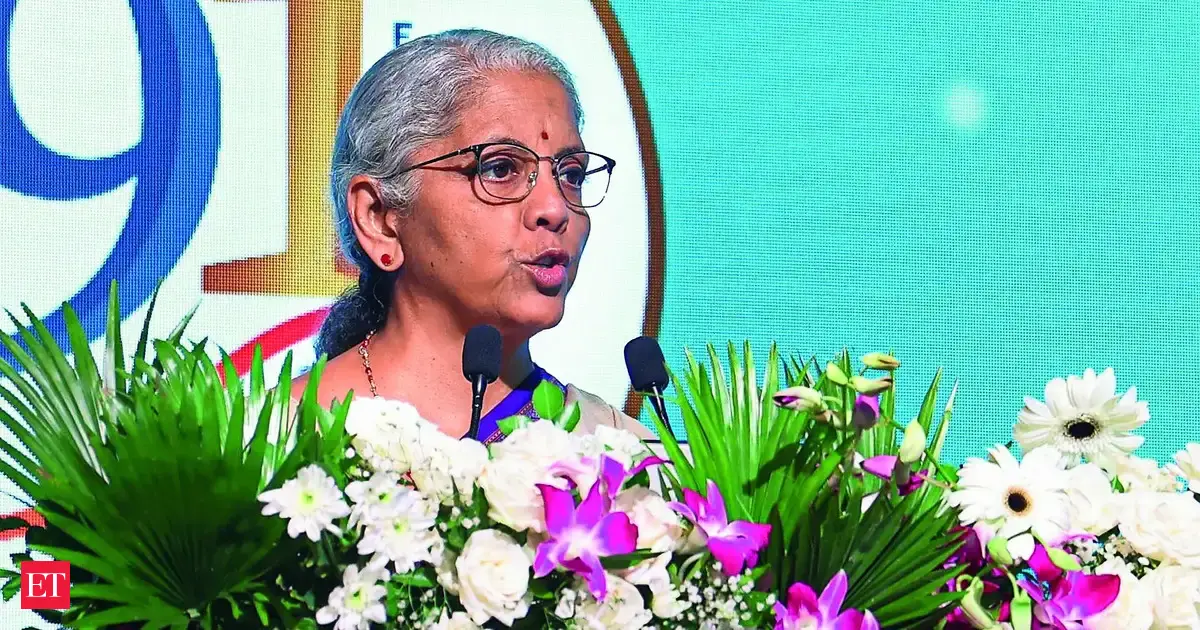By Martin Shwenk Leade
Copyright indiatimes

AgenciesRepresentational image.
India is quietly but steadily positioning itself at the centre of global trade networks. With multiple free trade agreements (FTAs) and strategic partnerships under discussion, the country is signalling rising ambitions for economic cooperation across Asia, Europe, and the Middle East. Commerce and Industry Minister Piyush Goyal has been candid, “The government is in active negotiations with several countries for Free Trade Agreements (FTAs).” At the same time, India is carefully balancing its relationships with Russia while steadily improving ties with China.Europe seeks a new strategic agenda with IndiaOn September 17, 2025, the European Commission unveiled a ‘New Strategic EU-India Agenda’ in Brussels, aiming to strengthen cooperation with India in trade, security, and defence.EU Vice-President Kaja Kallas described India as a “crucial” partner. She said the strategy spans trade, technology, security, defence, and climate, and noted that “the EU and India have the potential and determination to shape one of the defining partnerships of the 21st century.” Kallas also highlighted ongoing discussions on sharing classified information and deepening defence industry ties, though some EU member states remain cautious.Live EventsAlso Read: EU proposes new strategic agenda to raise bilateral relations with IndiaSeparately, EU trade chief Maroš Šefčovič recently visited India to discuss a free trade agreement (FTA) with Commerce Minister Piyush Goyal. The agenda calls for fast-tracking this FTA while also expanding cooperation on crisis management, maritime security, cyber defence, counterterrorism, and defence industry collaboration.The push comes amid the war in Ukraine, where Russia’s actions complicate EU-India relations. “India’s participation in Russia’s military exercises and its purchase of Russian oil stand in the way of closer ties, because ultimately, our partnership is not only about trade, but also about defending rules-based international order,” Kallas said.The agenda also emphasizes regional connectivity projects like the India-Middle East-Europe Economic Corridor, labour mobility, and closer engagement with the business community.FTA negotiations with the EU move forwardThe 14th round of trade talks is scheduled in Brussels from October 6-10.Recently, Italy’s Deputy Prime Minister Antonio Tajani reaffirmed Rome’s commitment to finalising the Free Trade Agreement between India and the EU during a meeting with External Affairs Minister S Jaishankar and Goyal on the sidelines of the UN General Assembly. “Italy and India share a strategic political and economic partnership that we intend to strengthen with my further visit to India in the coming months,” Tajani said. He also confirmed Italy’s support for rapid finalisation of the FTA.The EU is India’s second-largest trading partner, with goods trade reaching EUR 120 billion in 2024, representing 11.5 per cent of India’s total trade. Conversely, India ranks as the EU’s ninth-largest trading partner, accounting for 2.4 per cent of the bloc’s goods trade. Šefčovič noted that while trade has grown over 90% in the past decade, much potential remains untapped, particularly in agriculture and non-tariff barriers.India-EAEU FTA talks set to beginIndia is also moving forward with an FTA with the Eurasian Economic Union (EAEU), which includes Armenia, Belarus, Kazakhstan, Kyrgyz Republic, and Russia. The first round of talks is expected to focus on core elements of the prospective deal, paving the way for more detailed discussions.The Russian embassy indicated that the initial round of negotiations is likely to take place in early November, though the Indian government has not officially confirmed this. “The Ministers agreed on an approach under which the first round of negotiations is set to take place in early November this year in India and focus on discussing the core aspects of the future deal,” the embassy said.Also Read: India & Eurasia to launch FTA talksThe EAEU, with a combined GDP of $6.5 trillion, represents a significant opportunity for India to expand market access and tap into regional natural resources.Beyond the EAEU, India has a packed schedule over the next two months. Negotiation rounds are planned for FTAs with the European Union, Chile, and Peru, alongside a review of the ASEAN FTA. According to The Hindu, Ministry sources said the India-Chile FTA talks will take place from October 27-31, the India-Peru discussions from November 3-5, and the ASEAN FTA review on October 6-7, with the latter expected to wrap up by year-end.India to kick off first EFTA trade pactIndia is about to put its first-ever trade pact with a European bloc into action. On October 1, the Trade and Economic Partnership Agreement (TEPA) with the European Free Trade Association (EFTA) will be formally operationalised, marked by a high-profile launch at Bharat Mandapam in New Delhi. Commerce and Industry Minister Piyush Goyal, senior ministers from the EFTA nations, government officials, and industry representatives will attend, according to Business Standard.The four-nation bloc, comprising Iceland, Liechtenstein, Norway, and Switzerland, signed the TEPA with India on March 10, 2024.Government officials stressed that the launch is more than ceremonial. “The idea also is to ensure that industry stakeholders are aware of the deal and well-positioned to take full advantage of it,” a senior official told Business Standard.This deal is a milestone in India’s trade diplomacy. It’s the first trade agreement India has signed with a European bloc and the first where market access commitments are tied directly to investment pledges.Also Read: India’s first Europe-facing trade pact comes into effect on October 1 India has agreed to zero tariffs on 80–85 percent of goods imported from EFTA countries, while Indian exporters gain duty-free access on 99 percent of goods in EFTA markets. Sensitive sectors like agriculture and dairy are exempt, shielding domestic farmers.Investment is where the agreement really makes waves. The EFTA bloc has pledged to pour $50 billion into India over the first ten years, with another $50 billion over the following five. Officials estimate this could generate one million direct jobs over 15 years, making it a trade deal that promises tangible growth rather than just paper promises.India’s immediate gains on market access may be modest, given that EFTA countries already maintain low import tariffs. But the pact’s investment-linked design ensures mutual benefit. Among the four nations, Switzerland dominates trade. In FY25, India exported $1.97 billion worth of goods to the bloc, nearly three-fourths destined for Switzerland. Imports were far higher at $22.44 billion, with Switzerland alone accounting for $21.8 billion, creating a trade deficit of $120.47 billion.India-UAE partnerships accelerateIndia’s engagement with the Gulf is also accelerating, and Commerce and Industry Minister Piyush Goyal’s two-day visit to the UAE from September 18-19 underscored just how strategically both sides are thinking. Co-chairing the 13th India-UAE High-Level Joint Task Force on Investments, Goyal met with top UAE officials, including National Security Advisor Sheikh Tahnoon bin Zayed Al Nahyan, Investment Minister Mohamed Hassan Alsuwaidi, and Minister of Foreign Trade Dr. Thani bin Ahmed Al Zeyoudi.The discussions were wide-ranging, spanning infrastructure, energy security, and advanced technologies such as artificial intelligence, genomics, and data centres. Goyal highlighted the growing appetite among UAE investors for India’s startups, logistics, banking, and fintech sectors. One flagship project, Bharat Mart, a 2.7 million square foot facility in Dubai’s Jebel Ali Free Zone, has already drawn interest from over 9,000 companies and is expected to be operational within two years. Investments in green energy, pharmaceuticals, and a food park in Gujarat were also on the agenda.Since the India-UAE Comprehensive Economic Partnership Agreement (CEPA) came into force in May 2022, bilateral merchandise trade has nearly doubled, reaching $83.7 billion in FY24 from $43.3 billion in FY21.Also Read: UAE and India can jointly develop infrastructure projects in third countries: Piyush Goyal Both countries aim to raise non-oil trade to $100 billion by 2030. Goyal described the partnership as poised for a “big leap,” with focus areas spanning infrastructure, logistics, and sustainable development.The minister was accompanied by one of the largest Indian delegations in recent years: 75 business leaders across textiles, fisheries, pharmaceuticals, leather, and footwear. Their presence highlighted interest not only in traditional sectors but also in renewable energy, shipbuilding, retail, and high technology. UAE investment is expected to continue growing under the broader India-Middle East-Europe Economic Corridor framework, particularly in infrastructure, technology, data centres, and green energy.India-Oman CEPA nears finalisationMeanwhile, India-Oman relations are set to get a boost as both countries move to finalise their Comprehensive Economic Partnership Agreement (CEPA). Oman’s Ambassador to India, Issa Saleh Abdullah Saleh Alshibani, told PTI that while negotiations have concluded, the deal is now navigating the necessary legislative and administrative processes. “Hopefully… we will reach a stage of signature very soon,” he said.Formal talks on the CEPA began in November 2023. Such agreements typically aim to reduce or eliminate customs duties on as many goods as possible while easing regulations to boost trade in services and attract investment. On its potential impact, Alshibani said, “We have seen the effect of different CEPA agreements signed by India with other countries.” He added that the proposed deal would expand trade beyond energy into other commodities and services.Currently, India’s imports from Oman are dominated by petroleum products and urea, which together account for over 70% of total imports. Other key imports include propylene and ethylene polymers, pet coke, gypsum, chemicals, and iron and steel. “The main export from Oman to India, where the trade balance really makes a difference, depends on oil and petrochemical prices. This is why the CEPA agreement is important—it allows us to expand the business relationship into other commodities and services,” Alshibani said.Oman ranks as the third-largest export destination for India among Gulf Cooperation Council (GCC) countries. India already has a similar trade agreement with the UAE in place since May 2022. Bilateral trade between India and Oman reached $10.61 billion in 2024-25. Over 6,000 India-Oman joint ventures operate in Oman, with investments exceeding $776 million. Indian companies are particularly prominent in the Sohar and Salalah Free Zones, and cumulative FDI equity inflow from Oman to India totaled $605.57 million between April 2000 and March 2025.Taiwan keen for fast-tracked FTATaiwanese companies are pressing their government to accelerate a free trade agreement with India. James C Huang, chairman of the Taiwan External Trade Development Council, told ET on the sidelines of Taiwan Expo 2025, “While I cannot speak on behalf of both governments, as a business promotion organisation, I can express the desire of our private sector that an FTA will certainly facilitate business cooperation. Taiwanese companies are very interested in developing partnership with Indian companies.”Also Read: Taiwanese companies want FTA signed fast with India: Trade officialBilateral trade between India and Taiwan has doubled over the past five years, reaching $11.78 billion in 2024-25, up 16.5% from the previous fiscal year. Imports accounted for $10 billion of this total, rising 20% thanks to shipments of integrated circuits, micro assemblies, data processing machines, and a wide array of electronics and machinery. Exports to Taiwan, however, fell 3.2% to $1.78 billion.The semiconductor sector, dominated by Taiwan globally, offers a particularly compelling opportunity. Huang said, “Both governments are very interested in working with each other in semiconductor cooperation. I’m quite optimistic about that. Indian companies like Tata are also interested in joining hands with Taiwanese semiconductor companies.”Tata Electronics, partnering with Taiwan’s Powerchip Semiconductor Manufacturing Corporation, is investing Rs 91,000 crore to build India’s first advanced wafer fabrication plant at Dholera, Gujarat. Meanwhile, Foxconn is setting up an outsourced semiconductor assembly and testing facility in Jewar, Uttar Pradesh, in a joint venture with HCL Technologies.Huang emphasised that talent exchange will be the next step in semiconductor collaboration: “It takes time to build up the entire semiconductor manufacturing ecosystem. But we can start from talent exchanges. India has world-class talent. Taiwan’s MediaTek, which is the third largest integrated circuit design house globally, has a large operation in India and hires many Indian IC designers.” Many Indian engineers already work at Hsinchu Science Park, a global high-tech hub, and numerous students have joined National Taiwan University.Beyond semiconductors, Taiwanese machine tools manufacturers are eyeing joint ventures with Indian partners. Taiwan’s Golden Valley region hosts 1,000 precision machinery manufacturers and 10,000 suppliers, forming the world’s largest machine tool industry cluster with an annual output of nearly $30 billion, according to Taiwan Excellence.India’s rising global trade ambitionsAcross Asia, Europe, and the Middle East, India is systematically expanding its footprint. Taiwanese companies eye semiconductor and machinery collaborations; Europe seeks deeper strategic and trade links; the EAEU offers a $6.5 trillion market; and the UAE is doubling down on investments under CEPA. Together, these moves signal a coordinated push to diversify trade, attract investment, and strengthen India’s geopolitical and economic influence.Add as a Reliable and Trusted News Source Add Now!
(You can now subscribe to our Economic Times WhatsApp channel)
Read More News oneu india trade relationseu india partnershipindia eu free trade agreementindia eu defence collaborationindia russia oil tiesindia middle east europe corridor projectindia eu cyber defence cooperationindia eu maritime security cooperationtrump modi
(Catch all the Business News, Breaking News, Budget 2025 Events and Latest News Updates on The Economic Times.) Subscribe to The Economic Times Prime and read the ET ePaper online….moreless
(You can now subscribe to our Economic Times WhatsApp channel)Read More News oneu india trade relationseu india partnershipindia eu free trade agreementindia eu defence collaborationindia russia oil tiesindia middle east europe corridor projectindia eu cyber defence cooperationindia eu maritime security cooperationtrump modi(Catch all the Business News, Breaking News, Budget 2025 Events and Latest News Updates on The Economic Times.) Subscribe to The Economic Times Prime and read the ET ePaper online….moreless
Prime ExclusivesInvestment IdeasStock Report PlusePaperWealth Edition123View all Stories



